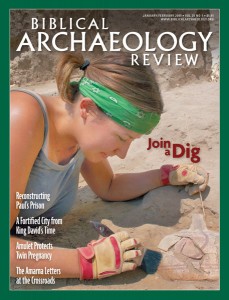The Trowel vs. the Text
How the Amarna letters challenge archaeology

“What would we ever do without the Amarna tablets?” asks the text scholar. “Oh, yeah?” replies the field archaeologist. “What would we ever do without the corrective of our excavated sites?” “Corrective?” says the text scholar. “Who needs the corrective, you or me?” And that, as they say, is the question.
The Amarna tablets were discovered by accident. Professional archaeologists had nothing to do with it. In autumn 1887, a poor Bedouin woman found some inscribed clay tablets among ancient ruins located east of the Nile about 200 miles south of Cairo. The scholars called the site el-Amarna after the name of the Bedouin tribe living there.
The site was in fact the capital of Pharaoh Akhenaten (Amenophis IV, 1353–1337 B.C.E.), who was known as the heretic pharaoh because he recognized only one deity, the Egyptian sun god, Aten. (As Sigmund Freud observed, Akhenaten was the first monotheist.) To emphasize the profound change in Egyptian religious culture, he moved his capital from Thebes to an entirely new site that he called Akhetaten (“the horizon of Aten”). And that is where the Amarna tablets were found.
Already a library member? Log in here.
Institution user? Log in with your IP address.

